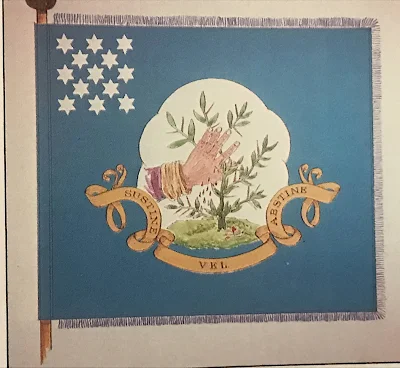Following their landed at Kalamita Bay on 18 September 1854, the Allied Army started south towards the port of Sebastapol. During the March the armies became strung out over a great distance and the British and French forces had become separated. Being outnumbered significantly by the Russian cavalry it proved very difficult for British patrols to locate the Russian forces, and so the Allies moved blindly forward. The main Russian field army was positioned on the high ground overlooking the River Alma. The Russians had deployed a detachment forward of the main position under the command of General Kiriakoff, consisting of numerous cavalry and Cossacks regiments, two Infantry regiments (eight battalions) and artillery.
On the afternoon of 19 September the allied army reached a small river, the Bulganak, beyond which was a ridge that blocked the view to the south. On the summit of the ridge sat a group of Cossacks. At this point the British army was stretched out over several miles. The British sent the Light Cavalry Brigade with a Horse Artillery battery to scout the ridge.
The battlefield before them consisted of a shallow river and ridge line beyond it. From that ridge the ground dropped away to a valley, beyond which was a second ridge. The British cavalry commande could see Russian Cossacks on the ridge but nothing beyond it. He sent back for reinforcements and moved the cavalry forward to investigate. He knew the British Light Division was near by for support.
At this is the point the historical narrative ends and our table top battle begins .
The British Light Cavalry Brigade and Royal Horse Artillery advance into the valley. Confronted by Russian cavalry they move forward to engage the enemy and give time for the Light Division to arrive.
The Russian cavalry spend extra command points to move to contact (each unit has command points to do extra things. Once spent they are gone. Better units have more pounts, poorer units less). In the ensuing melee the British cavalry is sent running from the field! The Royal Horse Artillery keeps the Cossacks at bay and soon the 1st Brigade of the Light Division has arrived. They take position on the Heights. During this time the Russian commander has advanced his infantry across the valley determined to push the British off the field.
Deployed along the ridge line the British await the Russian assault. The 1st Brigade of the Light Division firm line with artillery support. The 2nd brigade is just crossing the stream. Lord Lucan arrives to try and rally the cavalry after Cardigan's folly.
Meanwhile the Russian cavalry fall back behind the infantry and artillery numbers up to move forward to get into better range. Both regiments advance steadily maintain spacing. The masses infantry makes a noble sight. At this point aged veterans from the peninsula campaigns must be feeling deja vu which is not helped by Lord Raglan mumbling about the French coming in in the old way.
On the Russian left flank four battalion converge on the British. The 7th Royal Fusiliers and Royal Artillery opened a devastating fire which killed one of the battalion commanders. But not enough to stop the masses columns who closed and drove the Fusilier back. In the center the Royal Welch Fusiliers held firm and stoped the columns while the 88th delivered a heavy fire that also stoped the attack on that flank. Raglan moved the 19th Regiment to protect the British right flank. The brigade and Division commanders rushed to rally the Fusilier regiment and organized a counter attack.
The British 88th drive back the two battalions in front of them but things were coming unglued.
The Russians continued their relentless advance. They Drive back both the 19th and 7th Fusilier as well as over running the guns. In addition the Russian cavalry double times it's movement to get into the fight on the left flank.
The British flank uncovered, Russians mounted a counter attack also by the line and almost no reinforcements available the British commander orders a withdrawal. The masses of Russian columns were too much for the British this time.
Conclusion: This was a most enjoyable scenario that in have wanted to fight out for a while. And I will return to it again. I think the key to the Russian victory was aggressive use of their artillery (which is very good) and paying extra command points to move extra. This gave them less time under fire and closing to close contact quicker. Due to the small size of the table and the large number of regiments I did not enforce the six inches between Russian columns rule.
I should have had the British use their command points to fire extra times. The key for the British is to get a number of morale markets onto the Russian columns to reduce their effectiveness. Remember that for each market you subtract 1 from every due roll. But it was great fun getting these rules and figures out again. I think another battle or two in the next month would be grand. Perhaps the attack of the British 1st and Light Division at the Alma. Or the French attack on the Russian position at the Akma. We shall see.
One other thing I learned from this game was my table space here at home is too small. I have two folding tables which create a six foot by five foot table. I think this works for small games (see Hobkirk Hill) but not for this number of regiments. I felt the board was too crowded. Let's see what a second table can do!


















































